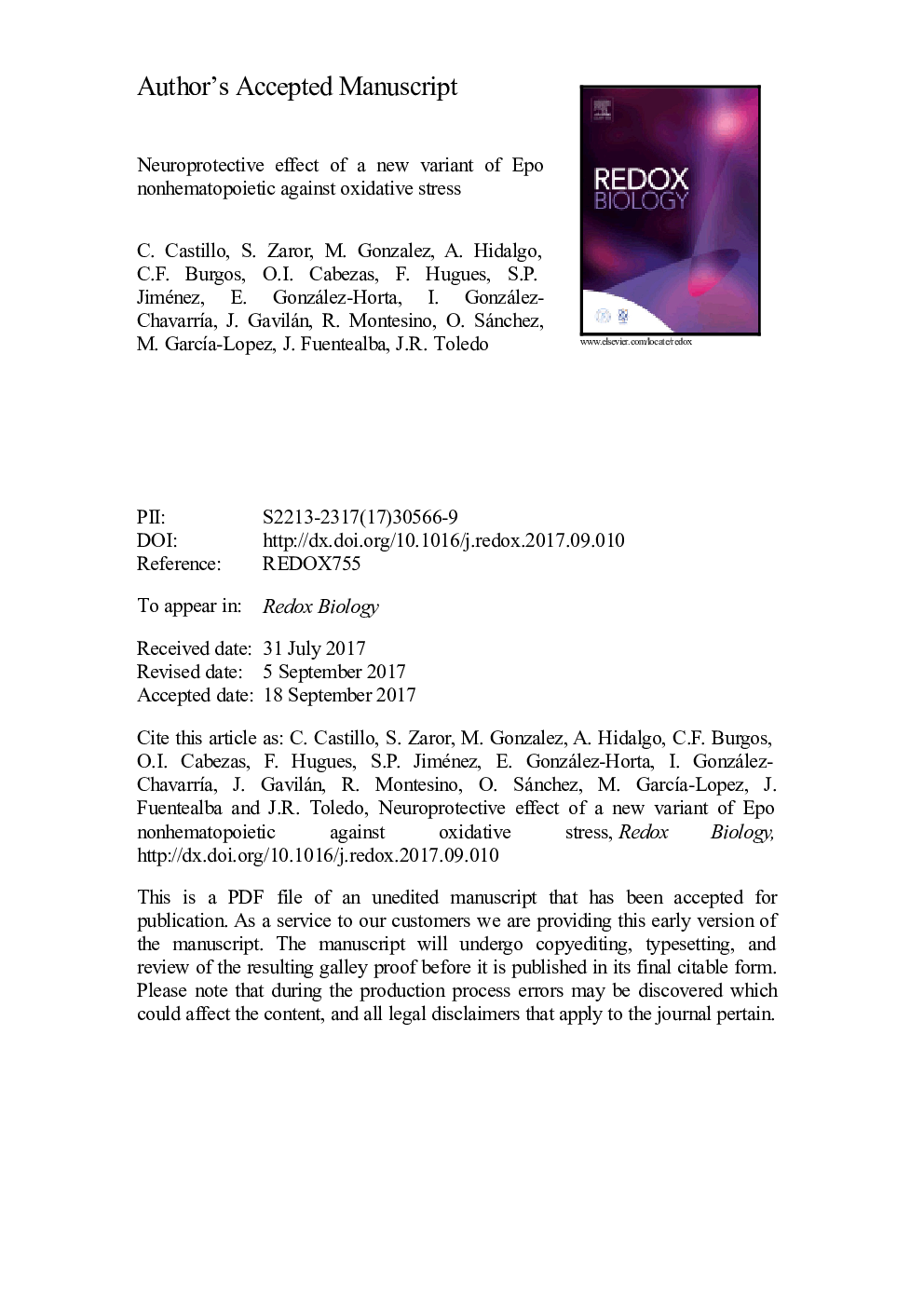| Article ID | Journal | Published Year | Pages | File Type |
|---|---|---|---|---|
| 8286825 | Redox Biology | 2018 | 26 Pages |
Abstract
Human erythropoietin is mainly recognized for its hematopoietic function; however, by binding to its receptor (EpoR), it can activate different signaling pathways as STAT, PI3K, MAPK and RAS to increase cellular differentiation or provide neuroprotective effects, among others. A recombinant human erythropoietin variant with low glycosylation and without hematopoietic effect (EpoL) was purified from skimmed goat milk. Recombinant human erythropoietin (Epo) was obtained from CHO cell line and used as control to compare EpoL effects. Neuroprotection studies were performed in PC12 cells and rat hippocampal slices. Cells were pretreated during 1Â h with EpoL or Epo and exposed to oxidative agents (H2O2 or FCCP); cell viability was assayed at the end of the experiment by the MTT method. Hippocampal slices were exposed to 15Â min of oxygen and glucose deprivation (OGD) and the neuroprotective drugs EpoL or Epo were incubated for 2Â h post-OGD in re-oxygenated medium. Cell cultures stressed with oxidative agents, and pretreated with EpoL, showed neuroprotective effects of 30% at a concentration 10 times lower than that of Epo. Moreover, similar differences were observed in OGD ex vivo assays. Neuroprotection elicited by EpoL was lost when an antibody against EpoR was present, indicating that its effect is EpoR-dependent. In conclusion, our results suggest that EpoL has a more potent neuroprotective profile than Epo against oxidative stress, mediated by activation of EpoR, thus EpoL represents an important target to develop a potential biopharmaceutical to treat different central nervous system pathologies related to oxidative stress such as stroke or neurodegenerative diseases.
Related Topics
Life Sciences
Biochemistry, Genetics and Molecular Biology
Ageing
Authors
C. Castillo, S. Zaror, M. Gonzalez, A. Hidalgo, C.F. Burgos, O.I. Cabezas, F. Hugues, S.P. Jiménez, E. González-Horta, I. González-ChavarrÃa, J. Gavilán, R. Montesino, O. Sánchez, Manuela G. Lopez, J. Fuentealba, J.R. Toledo,
